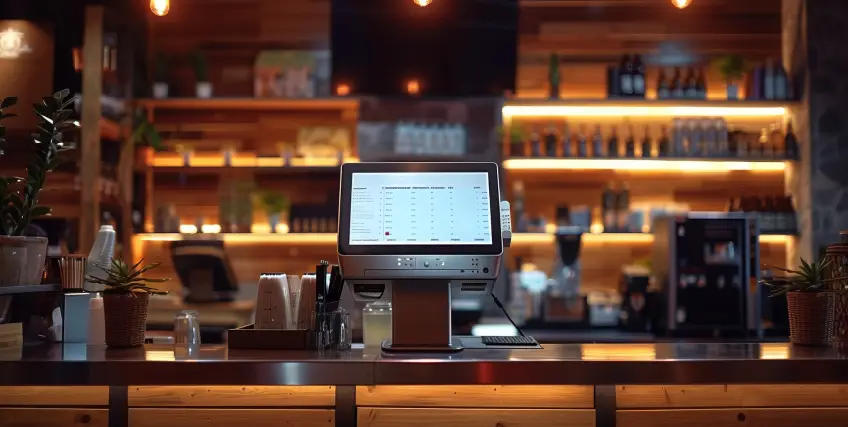Restaurant Equipment Financing How to Keep Your Kitchen Running Smoothly
August 14, 2025 | Last Updated on: August 14, 2025

Maintaining a restaurant’s kitchen is all about efficiency, reliability, and the confidence that every meal served meets the highest standard. Behind this is a significant investment in commercial-grade equipment from ovens and refrigerators to dishwashers and prep tables.
For both new and established restaurants, obtaining and upgrading this vital equipment often becomes one of the most formidable financial hurdles. That’s where finance for equipment becomes an essential tool, ensuring your kitchen continues to operate at peak performance without crippling your cash flow.
Understanding Restaurant Finance for Equipment
Restaurant equipment financing loans, otherwise known as finance for equipment, are an option for business financing programs that are specifically meant to cater to the acquisition of essential machinery and appliances for the kitchen.
This method allows restaurant entrepreneurs to borrow or lease restaurant equipment without necessarily having a substantial initial investment. The process generally involves borrowing from a financier or taking out a leasing agreement, with the new equipment purchased forming the collateral for the financing needs.
Why Is Equipment Financing Crucial for Restaurants?
Outfitting a commercial kitchen can be extremely costly. Walk-in coolers, special mixers, and other such equipment add up fast, and paying cash for them depletes your working capital.
Finance for equipment enables you to outfit your kitchen to industry standards, react to new menu trends, replace old appliances, and weather emergencies, all while maintaining funds available for day-to-day operations and unexpected challenges.
Types of Equipment Financing Options for Restaurants
There are some finance for equipment that you can consider for running your kitchen smoothly and look up to these equipment financing solutions.
Equipment loans
A business equipment loan is a traditional pathway for restaurant proprietors to purchase appliances outright. If approved, you receive funds up to a percentage of the worth of the machinery, usually between 80% to 100%, and agree to payback terms. You possess the equipment once the loan has been fulfilled, and the asset itself typically acts as collateral.
Equipment leasing
Restaurant equipment lease contracts enable you to pay a certain amount of money every month to use appliances for a set period, often with the option to own them after the lease.
Leasing is especially ideal for start-up restaurants with limited funds or businesses that need to maintain up-to-date technology without being left with obsolete assets. Leasing can shield you from excessive initial charges and can also give you flexibility to alter or upgrade equipment as your needs change.
Vendor and manufacturer financing
Some equipment manufacturers and vendors offer finance for equipment directly, simplifying the purchasing process and, in certain situations, even offering competitive interest rates in order to sell their own products.
It's a simple option that can strengthen your bargaining position but always compare terms with independent lenders or banks to get the best deal.
How Finance for Equipment Supports Kitchen Operations
Below mentioned are some ways through which you can support your kitchen with the help of finance for equipment.
Preserving cash flow
One of the greatest advantages of finance for equipment is that it leaves working capital intact to pay for other business obligations, i.e., payroll, inventory, or advertising. Instead of putting funds into an outright purchase, you make regular, manageable payments. This provides for steadier operations and allows you to remain liquid enough to absorb unexpected costs.
Enabling rapid expansion or upgrades
When the opportunity arises, like a rush order or an opportunity to roll out a new menu, having stable financing at your disposal makes expansion a reality. When you need additional freezers for bulk storage or additional fryers to process larger orders, financing for equipment is the foundation of an effective business plan.
Handling emergency replacements
Nothing can disrupt service like a malfunctioning oven or walk-in cooler. Finance for equipment enables restaurant managers to deal with unexpected emergencies without resorting to emergency funds, ensuring the kitchen is never shut down for lack of capital.
Possible Tax advantages
Most restaurant business owners can claim upfront tax deductions on financed equipment. For example, in certain locations, the entire purchase cost of eligible equipment is deductible in the year it's financed because of provisions like Section 179 deductions. Always be sure to speak with an accountant to maximize your savings.
The Equipment Financing Loan Process
Finance for equipment has some procedures, which are mentioned below:
Assessment and application
Start with a list of your equipment needs, such as brand names, models, and approximations. Lenders will also want to know your business's credit history, income records, and rating, but the approval process for finance for equipment is less demanding than other business loans since the machines themselves secure the loan.
Loan or lease approval
Once the application is submitted, the majority of lenders make prompt decisions, sometimes within 24 hours for highly qualified borrowers. If approved, money is paid out, or leasing begins, and you can proceed to buy the equipment you need.
Repayment and ownership
Finance for equipment have set monthly payments. At the end of the loan, you own your business outright. Under lease contracts, you generally have lease options at the end of the lease term: purchase the appliances for a residual value, turn them in, or replace them with new models.
Lease Restaurant Equipment vs. Buying: Key Considerations
If you want to know which option will be better for you when looking for finance for equipment, you can go through the points below and make your decision.
Cost comparison
Although leasing avoids a large initial outlay, the total amount of money paid during the term of a long lease may exceed the purchase price. However, leasing may be more cost-effective for equipment that is prone to rapid technological change or abnormal wear and tear, as it enables you to upgrade sooner without suffering the full depreciation loss.
Ownership and equity
Finance for equipment ultimately gives you ownership and allows you to build equity in the assets, whereas leasing is like renting. Restaurants that anticipate using their equipment for many years may find that purchasing with a loan is less expensive in the long run, whereas those who need flexibility, expansion, or frequent updates may find leasing more suitable.
Maintenance and support
Some leasing options include maintenance and repair services, reducing the operational burden on your kitchen staff. This reduces downtime and the indirect expense of equipment failure, which in an active food service setting is essential.
Choosing the Best Equipment Financing for Your Business
Interest rates, term lengths, and down payment requirements can vary widely between lenders. The best equipment financing for your situation may come from banks, specialized restaurant lenders, manufacturers, or alternative online lenders. Factors to consider include:
- Approval times and ease of application
- Required documentation and credit score expectations
- Flexibility regarding new vs. used equipment
- Early payment penalties and upgrade options
- Customer service and track record in the restaurant industry.
Compare offers thoroughly before choosing a financing partner, as the right choice supports your business for years to come.
Common Mistakes to Avoid with Equipment Financing
These are some of the mistakes that you need to avoid to take the benefits of equipment financing:
Overextending borrowing power
Avoid the temptation to borrow money for too much or unnecessary equipment under the guise that all debt is good debt. Prioritize those items that will have a direct impact on kitchen productivity and revenue generation and think about future cash flow.
Failing to read the fine print
Loan and lease agreements contain substantial insurance, maintenance, penalty, and end-of-term provisions. Be sure to read the fine print, ask questions, and understand your responsibilities and rights before inking the deal.
Ignoring vendor reputation
Only handle trustworthy suppliers and lenders. New restaurants, particularly, need to handle partners with good customer relations and hospitality experience to avoid headaches.
Conclusion
The ability to keep your kitchen running smoothly hinges on quality equipment and the smart, strategic use of finance for equipment. From early days securing your first ovens to ongoing upgrades as your concept grows, modern financing solutions like small business equipment loan programs, leasing, and vendor-backed agreements make it possible to build a thriving, resilient restaurant.
By understanding your options, comparing offers, and aligning financing choices with your operational goals, you’ll position your business for long-term success, excellent service, and continued culinary innovation.
FAQs About Finance for Equipment
Is it better to lease or buy restaurant equipment?
Leasing equipment allows restaurants to avoid large equipment purchases upfront and instead pay a manageable monthly fee. It’s ideal for startups preserving annual revenue early on. Equipment finance specialists often highlight the tax benefits, as lease payments are usually deductible.
Why lease equipment instead of buy?
Leasing capital equipment lowers upfront costs and preserves annual revenue compared to outright equipment purchases. It also allows flexibility with upgrades, especially when working with providers that include equipment updates in the lease contract.
What are the two main financing options?
External financing typically includes equity financing, in which money is exchanged for ownership and future income, and debt financing, such as term loans, which must be repaid with interest. Suppliers provide both on the basis of business needs and risk profiles.
What type of lease is best for a restaurant?
A net lease plan may offer consistent monthly expenses. A NNN lease, for example, distinctly outlines rent, property taxes, insurance, and maintenance. Equipment finance professionals recommend it because it makes it easier to plan finances and effectively manage yearly income. However, the best will vary depending on each individual situation.
What are the disadvantages of lease finance?
Lease financing can sometimes cost more long-term than equipment purchases, offers less asset control, and may create dependency on providers. Term loans may be a better fit for businesses prioritizing ownership and long-term tax benefits.
Frequent searches leading to this page
Term Loans are made by Itria Ventures LLC or Cross River Bank, Member FDIC. This is not a deposit product. California residents: Itria Ventures LLC is licensed by the Department of Financial Protection and Innovation. Loans are made or arranged pursuant to California Financing Law License # 60DBO-35839




